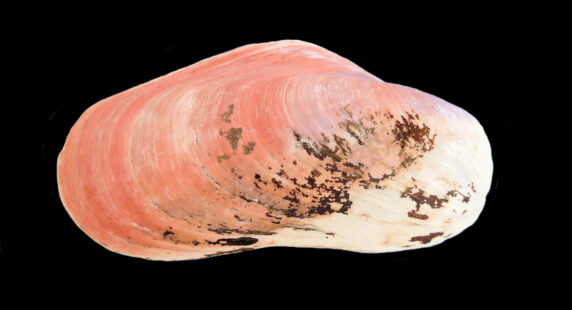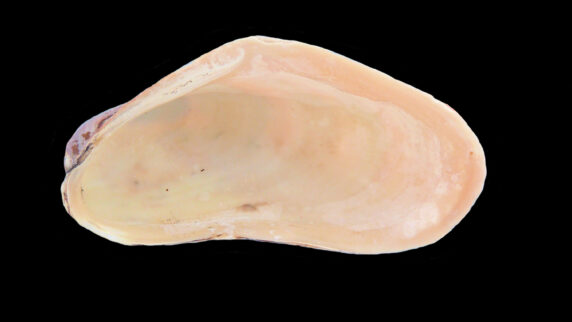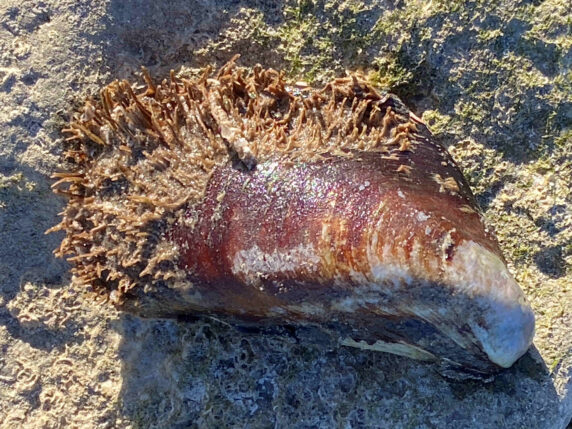Fat Horsemussel Shell, Modiolus capax

 Fat Horsemussel Shell, Modiolus capax. Shell collected from within the estuary of the Magdalena Bay complex, Baja California Sur, October 2018. Size: 9.5 cm (3.7 inches) x 4.6 cm (1.8 inches) x 2.7 cm (1.1 inches). Identification courtesy of Bob Hillis, Ivins, Utah.
Fat Horsemussel Shell, Modiolus capax. Shell collected from within the estuary of the Magdalena Bay complex, Baja California Sur, October 2018. Size: 9.5 cm (3.7 inches) x 4.6 cm (1.8 inches) x 2.7 cm (1.1 inches). Identification courtesy of Bob Hillis, Ivins, Utah.
 Fat Horsemussel Shell, Modiolus capax. Shell collected off the beach at Punta Chivato, Baja California Sur, January 2023. Collection, photograph and identification courtesy of Colin Campbell, DVM, Punta Chivato, Baja California Sur.
Fat Horsemussel Shell, Modiolus capax. Shell collected off the beach at Punta Chivato, Baja California Sur, January 2023. Collection, photograph and identification courtesy of Colin Campbell, DVM, Punta Chivato, Baja California Sur.
The Fat Horsemussel, Modiolus capax (Conrad, 1837), is a bivalve mollusk that is a member of the Mussels of the Mytilidae Family. They are also known as the Capax Horsemussel, and in Mexico as mejillo’n huaquilla. The Shell has a somewhat variable profile but is elongated and deeply inflated. The basal margin is widely rounded and the beak and anterior margin of the shell are bluntly rounded. These shells are covered by a dark brown periostracum and the exterior is pinkish red or purple in color and the interior is white with blue or dark purple tinges. Fat Horsemussel reach a maximum length of 15.6 cm (6.1 inches) and 7.3 cm (2.9 inches) in height.
Fat Horsemussels are found in groups attached to pier pilings and other hard surfaces within bays. Lone specimens are found attached to rocks in protected areas along the open coast. On occasion, individuals may be found buried in mud with only their posterior end exposed. Fat Horsemussels live intertidally to depths up to 35 m (115 feet) and they range from Central California to Peru, including the Galapagos Islands. They are found throughout the Sea of Cortez.
Synonyms include Modiola capax, Mytilus spatula, and Mytilus splendens are synonyms.